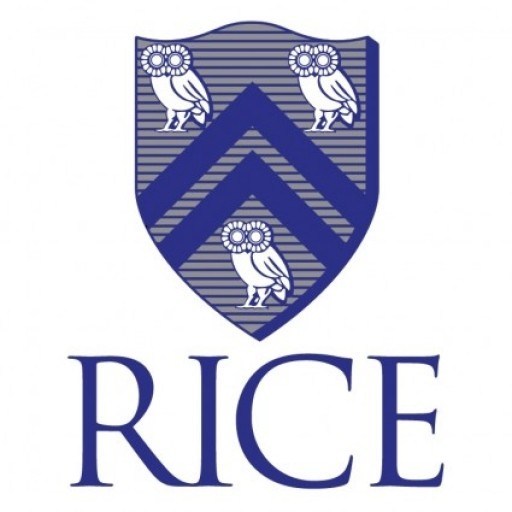Photos of university / #umnpics
The Master of Public Health (MPH) in Biostatistics at the University of Minnesota - Twin Cities Campus is a rigorous graduate program designed to prepare students for advanced analytical roles in public health research, policy making, and healthcare data management. This interdisciplinary program combines foundational coursework in biostatistical theory with practical applications, enabling graduates to design, analyze, and interpret complex health data effectively. Students will gain comprehensive training in statistical methodologies, data analysis techniques, and computational tools essential for addressing pressing public health challenges. The curriculum emphasizes the development of skills necessary for conducting epidemiological studies, clinical trials, and large-scale health surveys, with a focus on quantitative problem-solving and research communication.
Through a combination of coursework, collaborative projects, and research opportunities, students will learn to apply statistical techniques to real-world health data, interpret results accurately, and contribute valuable insights to public health initiatives. The program also includes training in the ethical considerations of data analysis and the importance of reproducibility in scientific research. Students have access to state-of-the-art facilities and resources, including advanced statistical software and support from experienced faculty members renowned in the field of biostatistics.
Particular strengths of the program include its integration with the School of Public Health’s broader mission to improve population health outcomes, its emphasis on data-driven decision-making, and its connections with local and national public health organizations. Graduates of the MPH in Biostatistics will be well-equipped for careers in governmental agencies, research institutions, hospitals, and pharmaceutical companies, or to pursue further doctoral studies. The program fosters a collaborative learning environment that encourages innovation, ethical practice, and lifelong learning, preparing students to become leaders in the rapidly evolving field of public health biostatistics.
The Master of Science in Biostatistics at the University of Minnesota – Twin Cities is a comprehensive program designed to prepare students for a variety of careers in public health, medical research, and statistical analysis. This rigorous curriculum combines core statistical theory with practical applications, equipping students with the skills necessary to design, analyze, and interpret complex biomedical data. Students will gain expertise in statistical methods specific to clinical trials, epidemiological studies, and public health research, enabling them to contribute effectively to advancing healthcare and medicine.
Throughout the program, students are introduced to essential topics such as probability theory, statistical inference, linear and non-linear modeling, survival analysis, and Bayesian methods. The curriculum emphasizes hands-on experience with state-of-the-art statistical software packages, including R and SAS, ensuring graduates are immediately ready to meet data analysis challenges in diverse settings. Additionally, the program offers specialized courses in longitudinal data analysis, measurement error, and bioinformatics, reflecting the evolving landscape of biostatistical research.
Research opportunities are an integral part of the program, allowing students to collaborate with faculty on ongoing projects in public health, medicine, and clinical sciences. This practical engagement enables students to apply theoretical knowledge to real-world problems, enhancing their analytical capabilities and research skills. The program also prepares students for further academic pursuits, including Ph.D. studies, or for positions in government agencies, pharmaceutical companies, hospitals, and public health organizations.
The faculty comprises experienced biostatisticians and researchers who are active contributors to fields such as epidemiology, chronic disease modeling, and health disparity research. Students benefit from mentorship and instruction that is both current and relevant to the needs of the modern healthcare landscape. The program supports a flexible learning environment, with options for full-time and part-time enrollment, as well as online components to accommodate working professionals.
Graduates of the University of Minnesota’s Biostatistics program will be well-equipped to analyze complex biomedical data, interpret statistical results accurately, and communicate findings effectively to diverse audiences. They will be prepared to make meaningful contributions to health research, policy, and practice, impacting public health initiatives both locally and globally. With a strong foundation in statistical science and practical training, students will be positioned to excel in the rapidly growing field of biostatistics, ultimately improving health outcomes through data-driven decision making.
Program Requirements: The Master of Science in Biostatistics at the University of Minnesota Twin Cities Campus requires applicants to hold a bachelor's degree from an accredited institution, with a strong academic background in mathematics, statistics, or a related field. Prospective students must submit GRE scores, with competitive scores strongly recommended, although GRE may not be mandatory depending on the applicant's academic record. International students are required to demonstrate proficiency in English through TOEFL or IELTS scores, with minimum thresholds established by the university. The application package should include official transcripts, letters of recommendation—typically three—covering academic or professional proficiency, and a statement of purpose outlining the applicant's interest in Biostatistics, career goals, and research interests. Relevant work or research experience in biostatistics, data analysis, or related disciplines can enhance the application. The program emphasizes a comprehensive curriculum that includes coursework in statistical theory, bioinformatics, epidemiology, and software skills, especially proficiency in statistical programming languages such as R and SAS. Students are expected to complete core courses in statistical methods, probability, and experimental design, as well as electives tailored toward specialized areas like clinical trials, health data science, and epidemiology. Research opportunities and internships are encouraged to provide practical experience in applied biostatistics. Graduates should be capable of analyzing complex biomedical data, designing studies, and interpreting results within health and medical research contexts. The program may also require a culminating experience, such as a thesis or comprehensive exam, to demonstrate mastery of subject matter. Throughout the program, students must adhere to university academic policies, maintain satisfactory progress, and participate in seminars or workshops designed to enhance their professional development.
Funding options for the Biostatistics program at the University of Minnesota – Twin Cities Campus primarily include scholarships, fellowships, assistantships, and loans. Graduate students admitted to the program are encouraged to apply for various forms of financial aid to support their studies. Teaching assistantships (TAs) and research assistantships (RAs) are available for qualified students, providing a stipend and tuition remission in exchange for teaching or research responsibilities. These assistantships not only offer financial support but also valuable professional experience in the field of biostatistics. Additionally, graduate students can apply for fellowships offered by the university or external organizations. The University of Minnesota offers internal fellowships which are highly competitive and aimed at supporting outstanding students in their academic pursuits. Federal student loans are also available to eligible students, offering low-interest borrowing options to help cover educational expenses. International students may have additional funding opportunities such as external scholarships and sponsored research programs, though they are encouraged to seek information early as funding availability can vary. The university’s Office of Financial Aid provides detailed guidance on application procedures, eligibility criteria, and deadlines for various funding sources. Moreover, students are advised to explore external scholarship programs, professional organizations, and industry-sponsored grants related to biostatistics and public health. In conclusion, while financial support is accessible through the university’s internal and external sources, applicants should plan ahead and apply early to maximize their chances of securing funding for their graduate studies in biostatistics.
The University of Minnesota - Twin Cities Campus offers a comprehensive program in Biostatistics designed to equip students with the essential skills and knowledge necessary for careers in health-related research, public health, and biomedical sciences. The program emphasizes the development of statistical methods tailored to the analysis of biological and health data, combining rigorous coursework with practical applications. Students gain expertise in statistical modeling, data analysis, and computational techniques, preparing them to address complex health problems through quantitative approaches.
The curriculum includes core courses in probability, statistics, and biostatistical methodology, along with specialized classes in clinical trial design, epidemiology, and bioinformatics. Students are encouraged to participate in collaborative research projects, internships, and seminars that foster real-world experience and interdisciplinary understanding. The program may offer both master's and doctoral degrees, accommodating students who wish to pursue advanced research or professional careers in academia, government agencies, or private industry.
Faculty members are experienced experts in biostatistics, epidemiology, and related fields, providing mentorship and guidance throughout the student’s academic journey. The program also emphasizes ethical research practices and effective communication of statistical findings to non-specialist audiences. Graduates of the program are well-prepared for roles such as biostatisticians, data analysts, clinical trial managers, and epidemiologists, contributing to the advancement of medical research, public health initiatives, and policy development.
The university maintains strong partnerships with healthcare organizations, research institutes, and industry leaders to ensure that the curriculum remains aligned with current industry standards and technological advancements. Students have access to state-of-the-art facilities, statistical software, and data repositories to support their coursework and research activities. Overall, the Biostatistics program at the University of Minnesota - Twin Cities Campus offers a rigorous, research-oriented education that prepares graduates to make meaningful contributions to health sciences through sophisticated statistical analysis and research methodologies.









